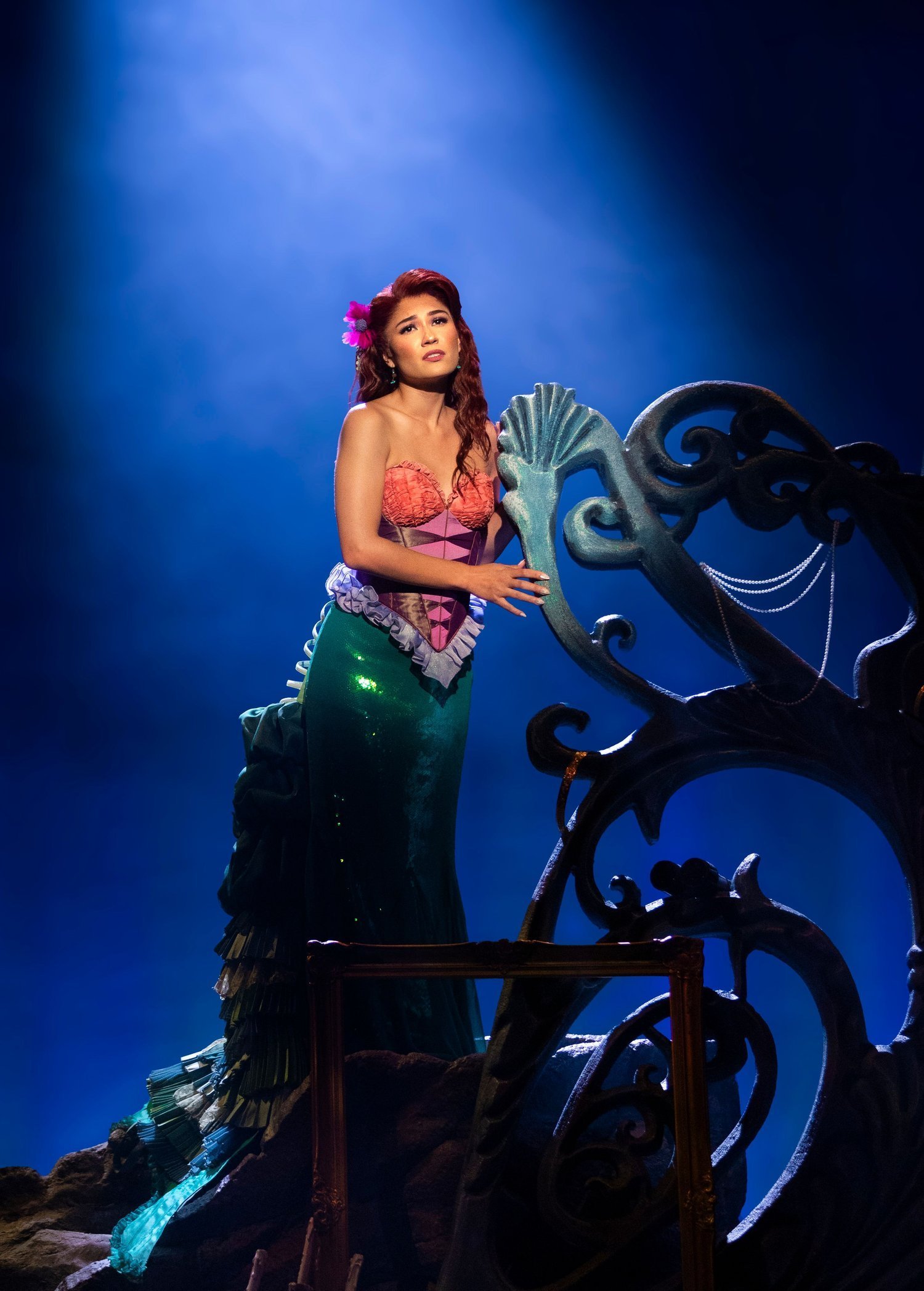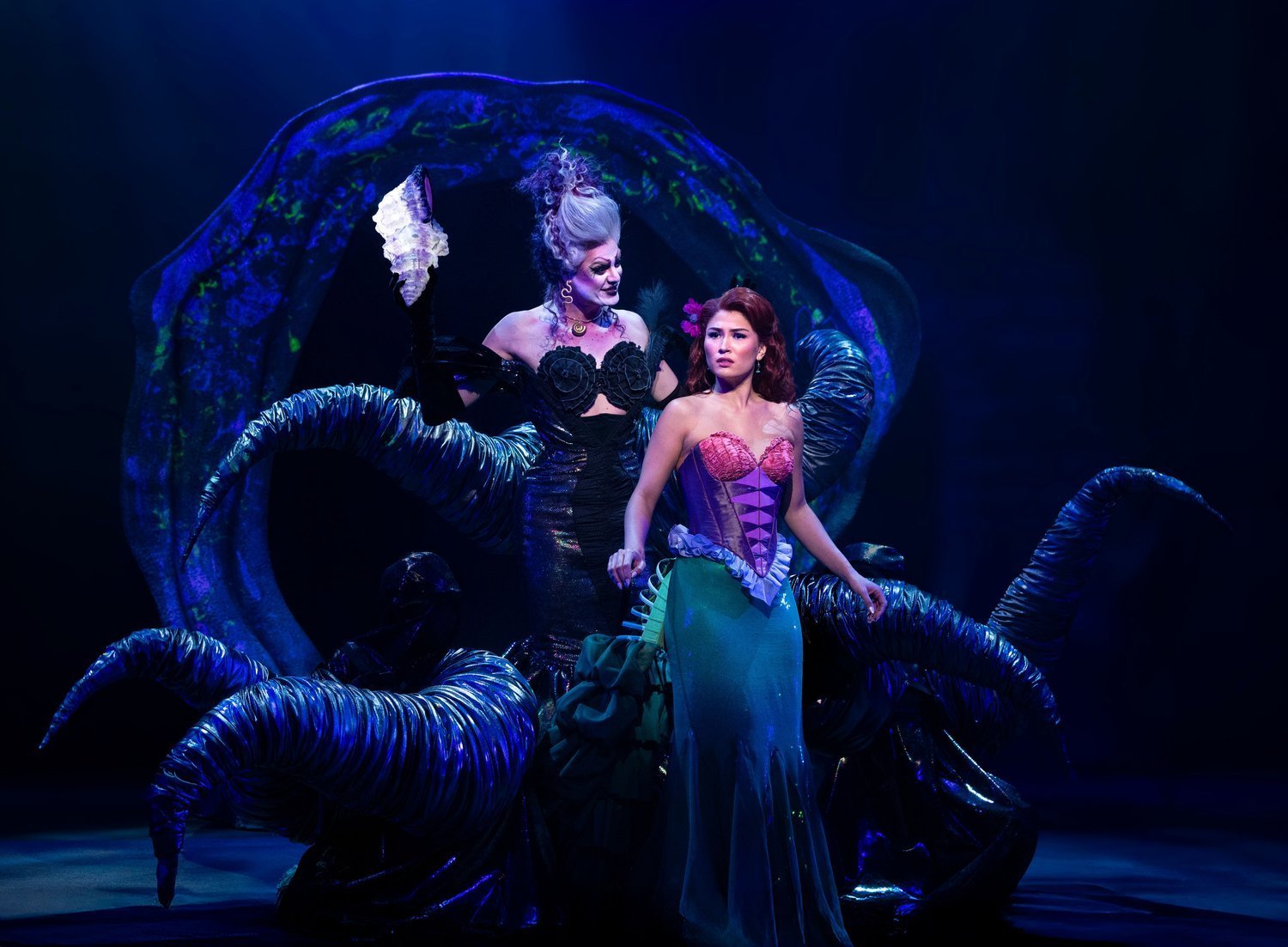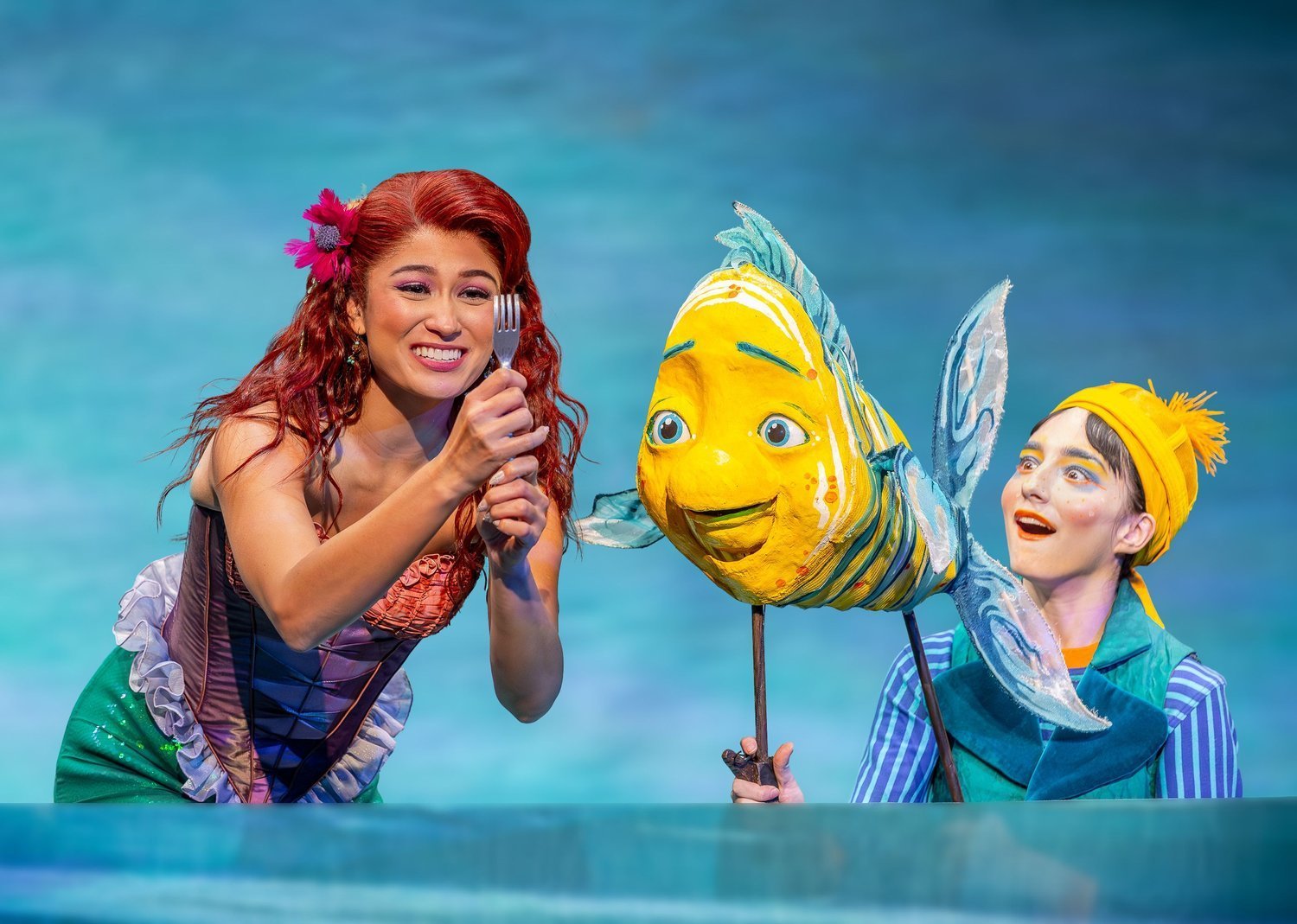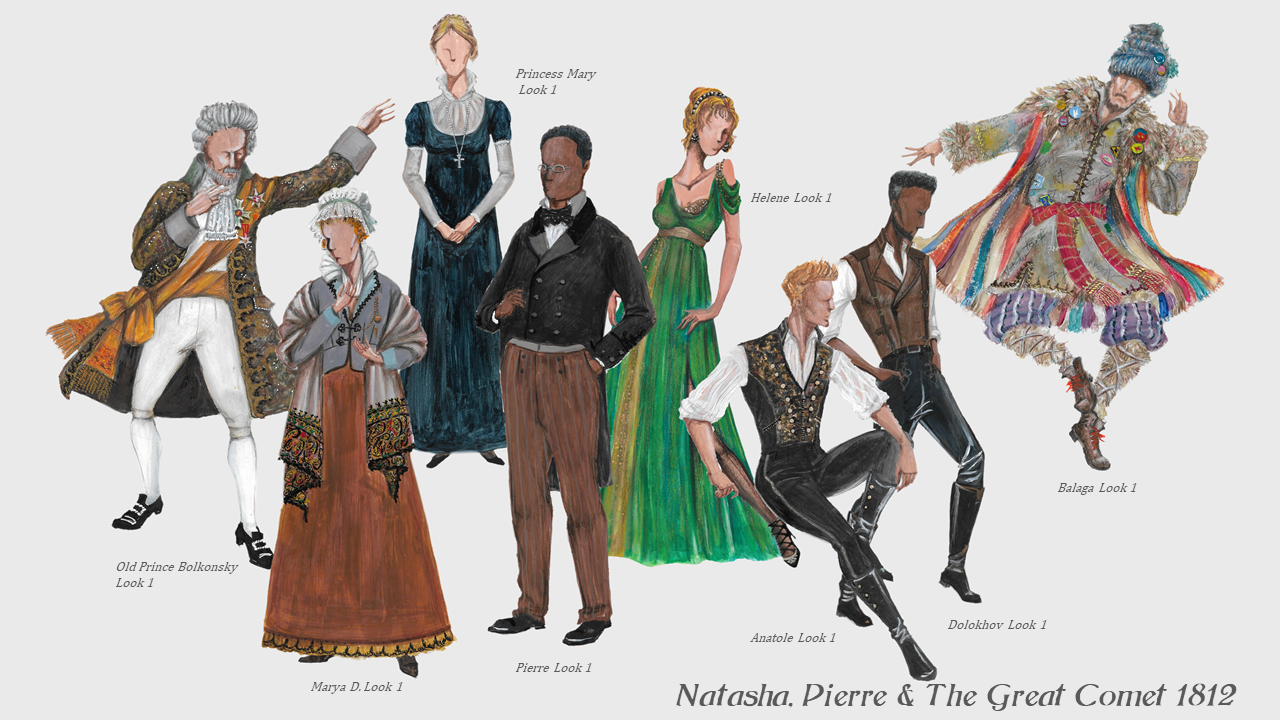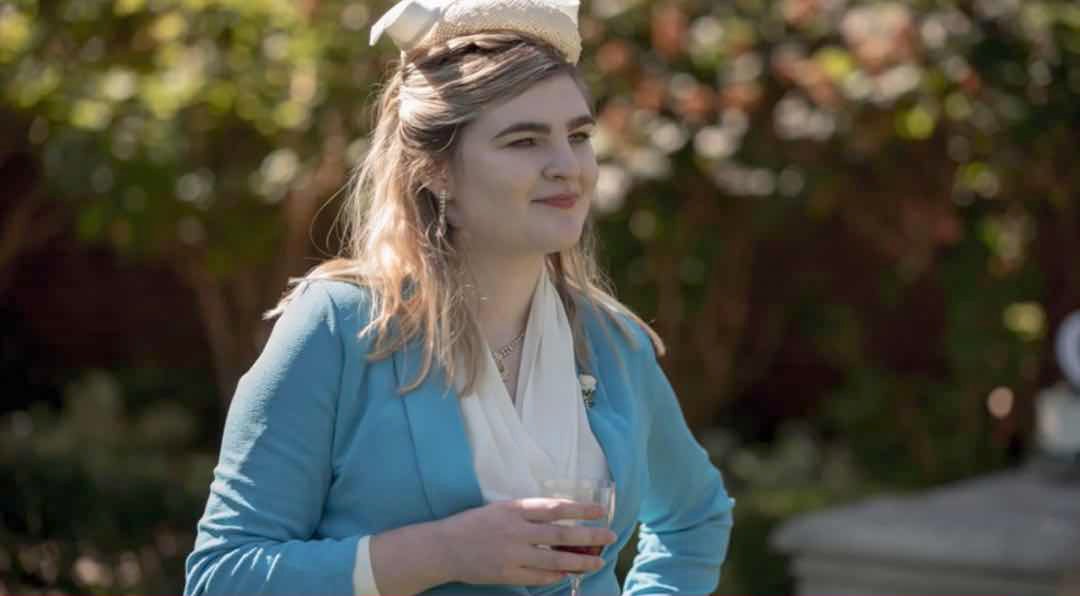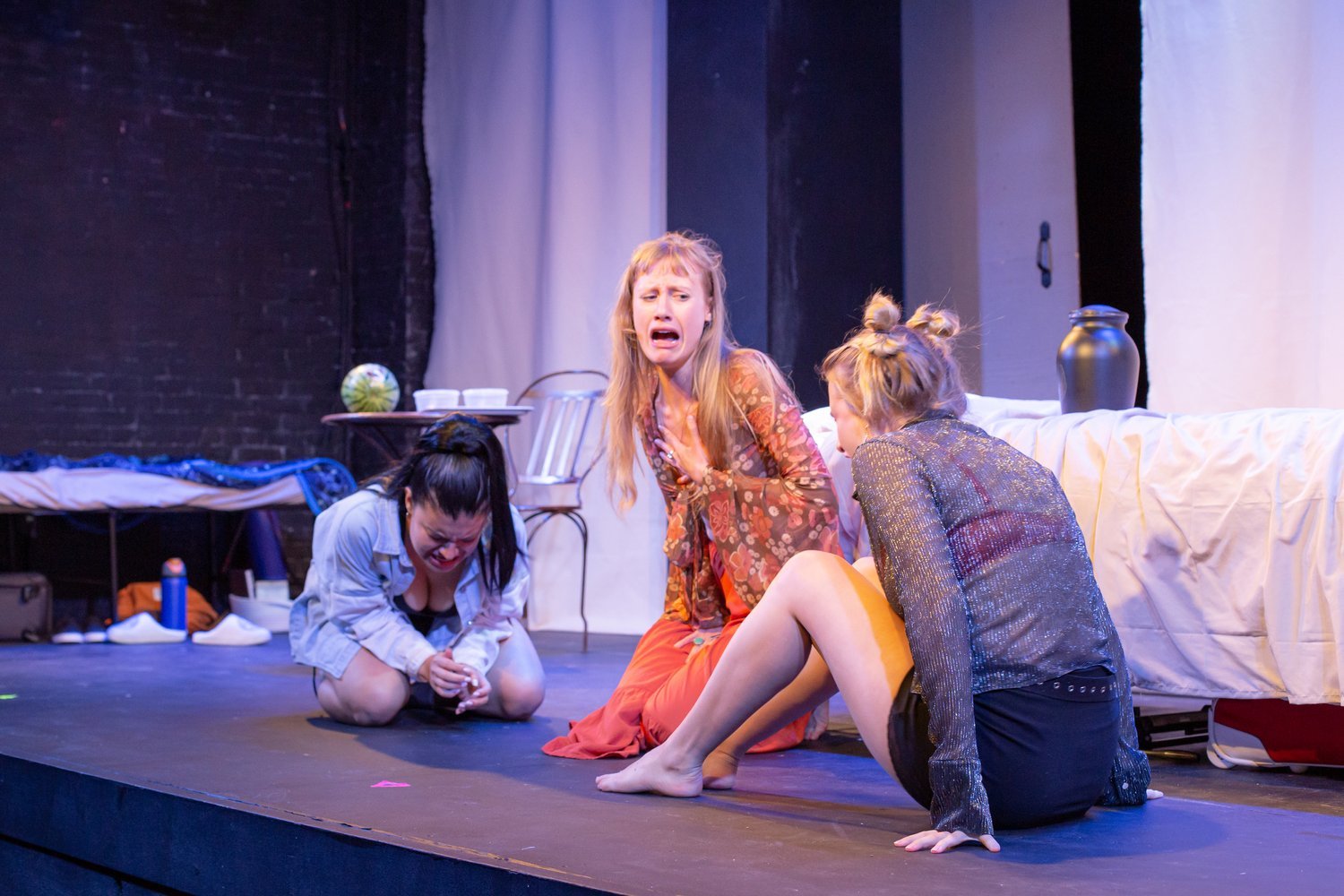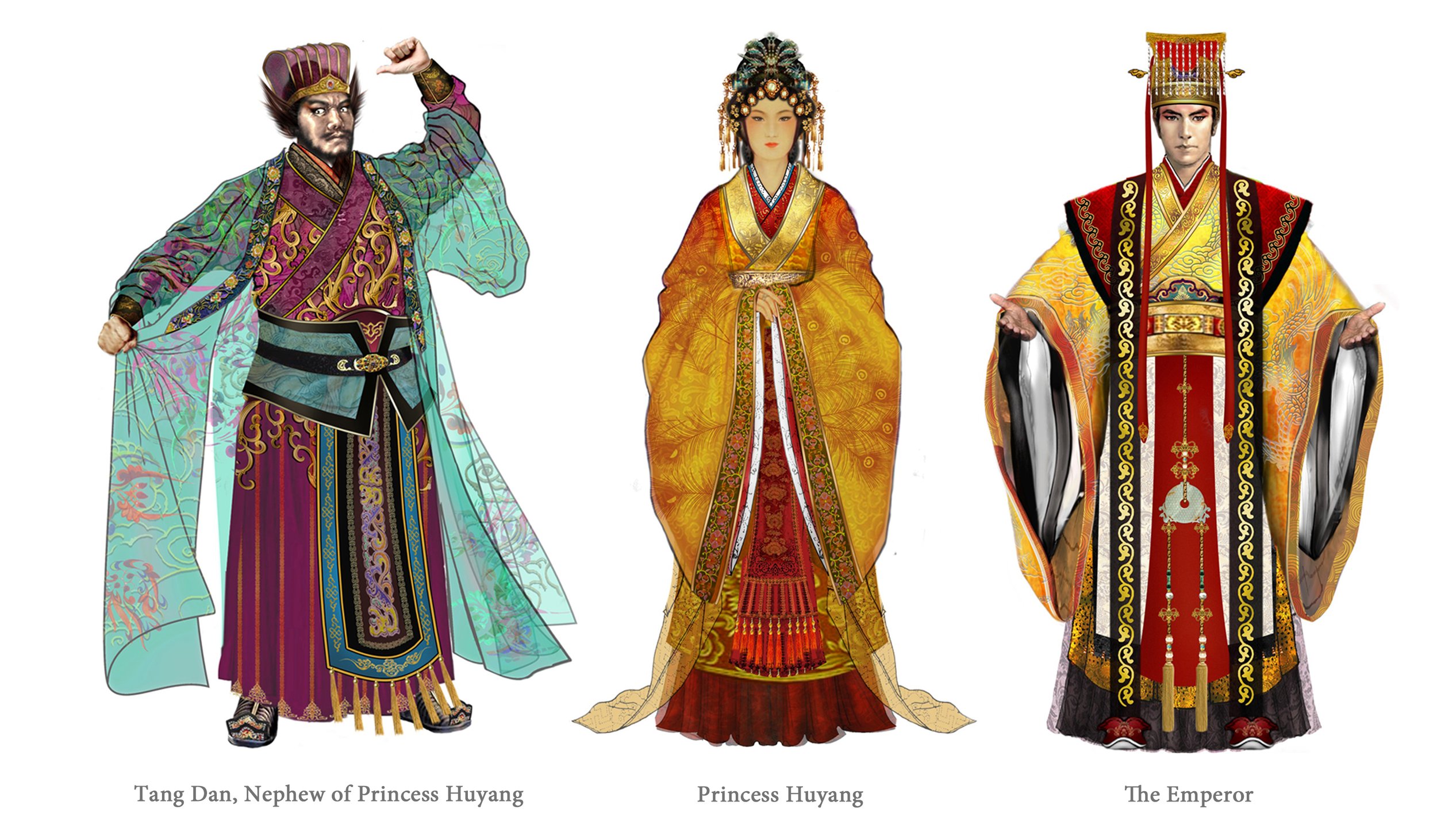
SHOW GALLERY
Disney’s The Little Mermaid
Drury Lane Theatre, Terrace, IL
Composed by Alan Menken and Howard Ashman
Directed by Scott Weinstein
Choreography by Kasey Alfonso
Set Design by Tijana Bjelajac
Costume Design by Zhang Yu & Ryan Park
Lighting Design by Ryan O’Gara
Projection Design by Anthony Churchill
Wig and Hair Design by Tommy Kurzman
Makeup Design by Amber Wutke
Photos by Brett Beiner
Salome
Award-Winning Concept Design — OPERA America 2022 Robert L.B. Tobin Prize
An opera by Richard Strauss and Hedwig Lachmann
Directed by Alison Pogorelc
Set Design by Ember Streshinsky
Choreography by Morgan Williams
Costume Design by Zhang Yu
Lighting Design by Avi Sheehan
Projection/Video Design by Camilla Tassi
-
The opera Salome follows the titular character on her search for autonomy in a world dominated by religious order and autocratic power. Throughout the opera, Salome sheds the material and aesthetic objectification imposed upon her body amid the complex interplay of power, faith, and desire, ultimately transforming into a divine prophetess of enlightenment.
Gold rope serves as the central motif in the costume design, symbolizing the ways in which each character—and their body—is bound by the material world. Twisting around the human form in various shapes—chains, knots, or shackles—the rope evokes both the opulence and hedonism of their world, as well as the constrictive burden it imposes.
Jochanaan’s bare torso resembles a cold marble statue—sensual, solemn, and devoid of emotion. The gold ropes and cracks etched across his body speak to the torment and captivity he has endured.
In stark contrast, Salome appears natural and alive. Her body, warm and radiant beneath flowing white veils, longs for release. In her final dance, she breaks free from the golden bindings, achieving a transcendent freedom that rises above all others.
The Infinite Energy of Ada Lovelace
-
This opera portrays Ada Lovelace, the world’s first computer programmer, who defied societal norms and gender constraints with her intellectual brilliance and groundbreaking contributions to computing and mathematics—a legacy that continues to inspire and remain profoundly relevant today.
The costume design creates a poetic moment in the scene where Ada dresses herself, likening her to a hummingbird—full of energy, yet encaged. This visual metaphor is embodied in the exposed structure of a traditional cage crinoline, evoking how societal expectations and historical forces confined her. As the narrative unfolds, Ada’s costume becomes lighter and freer, mirroring her journey toward liberation, self-mastery, and inner awakening.
Mannes Opera Production, The New School, New York
Composed by Kamala Sankaram
Libretto by Rob Handel
Conducted by Christopher Allen
Directed by Alison Pogorelc
Costume Design by Zhang Yu
Stage Management by Valos Lowe, Cordelia Senie
Photos by Nathaniel Johnston
The Chinese Lady
Southern Plains Productions, Oklahoma City
Written by Lloyd Suh
Directed by Samantha Toy Ozeas
Costume Design by Zhang Yu
Scenic Design by Ningning Yang
Lighting Design by Clara Wiebe
Sound Design by Iris Chiu
Production Stage Management by Audrey Mantia
Photos by Zhang Yu, John Gifford
-
"The Chinese Lady," Afong Moy, is believed to be the first Chinese woman in America. Beginning in 1834, at only 14 years old, Afong was displayed as a living exhibit, sharing her daily activities, attire, and the practice of walking with bound feet for curious American audiences. She remained on display for nearly half a century, clinging to the hope that her presence might bridge understanding between cultures. However, over the years, Afong confronts the loss of her autonomy and struggles with her fading identity. Throughout the play, Afong Moy ages and reflects on her years of being exhibited, providing insights into her changing views on her situation and the broader implications for how people of Asian descent are perceived in Western society.
The costume design is inspired by traditional Chinese porcelain, marked by images of plum blossoms and crack patterns, which hold deep aesthetic and cultural significance in Chinese art. This design represents the shared experiences and memories of early Chinese immigrants in North America, reflecting their common historical and cultural heritage through Afong's costume. It also illustrates how these collective memories have been transformed, fragmented, and lost over time.
As the narrative unfolds, Afong’s costume undergoes a series of transformations. Initially a faithful depiction of 19th-century Chinese fashion, it gradually loses its patterns, akin to a piece of porcelain delicately shattering over time. This continuous fading of patterns reflects Afong’s growing inner melancholy and sense of isolation. This evolution in her costume harmonizes with the emotional development of the play, while also guiding its aesthetic from realism to a more expressive and surreal style.
Natasha, Pierre & The Great Comet of 1812
Philip Chosky Theatre, Carnegie Mellon University, Pittsburgh
Musical by Dave Malloy
Directed and Choreographed by Tomé Cousin
Music Supervision by Rick Edinger
Music Direction by Catie Brown
Costume Design by Zhang Yu
Scenic Design by Izzy Hines
Lighting Design by Matthew J. Weisgable
Sound Design by Team Sound Comet
Dramaturgy by Julia Levine
Stage Management by Parker Thomas Kaeding
Fight Direction by Catherine Moore
Intimacy Choreography by Judith Ann Conte
Photos by Louis Stein, David Rubin
-
The primary inspiration for this costume design comes from the opera scene—one of the play’s key thematic moments—where the aristocrats bask in the height of their luxurious lives, yet their pleasure is shadowed by the decline of the aristocratic era and the looming crisis of war and French invasion. This broader, deeper historical backdrop reaches beyond the characters’ romantic entanglements.
Reflecting the musical’s mixed genres and styles of composition, the costume design fuses contemporary fashion with period elements. A consistent warm, golden tone runs throughout, creating a glamorous, aristocratic atmosphere marked by worldly elegance, indulgent joy, and the opulence of upper-class life.
In contrast, the opera singers and ballet dancers are designed in a surreal, geometric style inspired by Picasso’s Guernica. Rendered in cold tones, they evoke a sense of gloom and foreboding, sharply contrasting the aristocrats’ hedonism. Their symbolic, prophetic appearance opens a window onto the play’s deeper themes surrounding War and Peace.
Natasha is always dressed in white, highlighting her youth and innocence against the absurdity and complexity of the grand historical moment unfolding around her.
THE TEMPEST
Costume Design Excellence Award — Kennedy Center American College Theater Festival Regional Recognition
-
The costume design for this play seeks to create a striking contrast in texture, color, pattern, and silhouette, visually representing the tensions between characters that stem from their differing cultural and social backgrounds, lifestyles, values, and identities. In doing so, the design brings to the surface the hidden forces that drive their conflicts.
All actors appear to be ‘fully naked’ by wearing skin-toned undergarments, highlighting the raw, innocent human body in its most natural form. The costumes are divided into two distinct styles, yet both incorporate sheer or openwork elements that continually reveal the presence of the body underneath. In this way, the costumes act as a visual cue, reminding the audience how people are categorized, defined, and disciplined by external forces.
Prospero and Miranda wear garments made of natural-looking materials and fibers, evoking a fantastical, primal, and organic feel. In contrast, the other court characters wear clothing with more geometric, industrially manufactured forms, suggesting they come from an entirely different kind of civilization.
Temptation of Monks
Rauh Studio Theatre, Carnegie Mellon University, Pittsburgh
Choreography by Grant Reynolds
Costume Design by Zhang Yu
Photos by Louis Stein
-
The design is a set of transformative costumes with completely different patchwork on the inside and outside. During the performance, the costumes flip down to reveal a dramatic shift, as the dancers transform from modest monks into playful clowns.
The Voyage of Jianzhen
The Annual Award of the China Institute of Stage Design for Best Costume Design in 2012
Shanghai Oriental Art Center, China
Directed by Xiong Yuanwei
Costume Design by Pan Jianhua, Zhang Yu
-
The musical The Voyage of Jianzhen tells the moving story of the Tang Dynasty monk, Master Jianzhen, who—undeterred by hardship—made six attempts to cross the sea to Japan and ultimately succeeded in spreading Buddhism. The story honors his unwavering determination and the profound historical and cultural ties between China and Japan.
The costume design reflects the historical silhouette and spirit of the era, drawing inspiration from the patterns and colors of Tang Dynasty porcelain, combined with traditional decorative motifs from both cultures. Incorporating expressive ink wash painting techniques, the designs evoke a romantic, poetic, and Zen-like atmosphere.
Hand-painted and collaged embroidery on gradient-dyed silk chiffon creates a flowing interplay of illusion and form. The costumes tell the story through the beauty of Eastern elegance, unfolding like a lyrical, ethereal scroll.
Tartuffe
Fordham University Lincoln Center, New York
Written by Molière
Directed by Terrence Mosely
Costume Design by Zhang Yu
Scenic Design by Dahlia Al-Habieli
Lighting Design by Alex Alipio
Sound Design by Mellie Way
Hair and Makeup Design by Addie Thompson
Production Stage Management by Olive Fox
Stage Management by Scott Yezzi
Photos by Joey Moro
Beatrice et Bénédict
Digital Opera, Carnegie Mellon University, Pittsburgh
Directed by Candace Evans
Costume Design by Zhang Yu
Scenic Design by Rosie Villano
Stage Manager by Shahzad Khan
Photos by Ivan Plazacic
-
The opera Béatrice et Bénédict reimagines Shakespeare’s Much Ado About Nothing, set in post–World War II France. The costume design captures the spirit of joy and renewal that followed the war, with a central focus on contrast—particularly between the vibrant, floral femininity of the women and the somber masculinity of the military. These visual oppositions highlight the opera’s emotional tension, character dynamics, and humor. Costume variations express both personality and status—military uniforms emphasize individual traits and rank, while the distinct styles of Héro and Béatrice reflect their unique identities and differing views on love.
SWAY
The Flea Theater, New York
Written by SMJ
Directed by Daniella Caggiano
Produced by Paige Esterly
Intimacy Direction by Lauren DeLeon
Fight Choreography by Leana Gardella
Tech Stage Management by Emily Bubeck
Stage Management by Isabel Schwartzberg
Light Design by Jennifer Fok
Costume Design by Zhang Yu
Scenic & Prop Design by Karen Loewy Movilla
Sound & Video Design by Art Kopischke


















